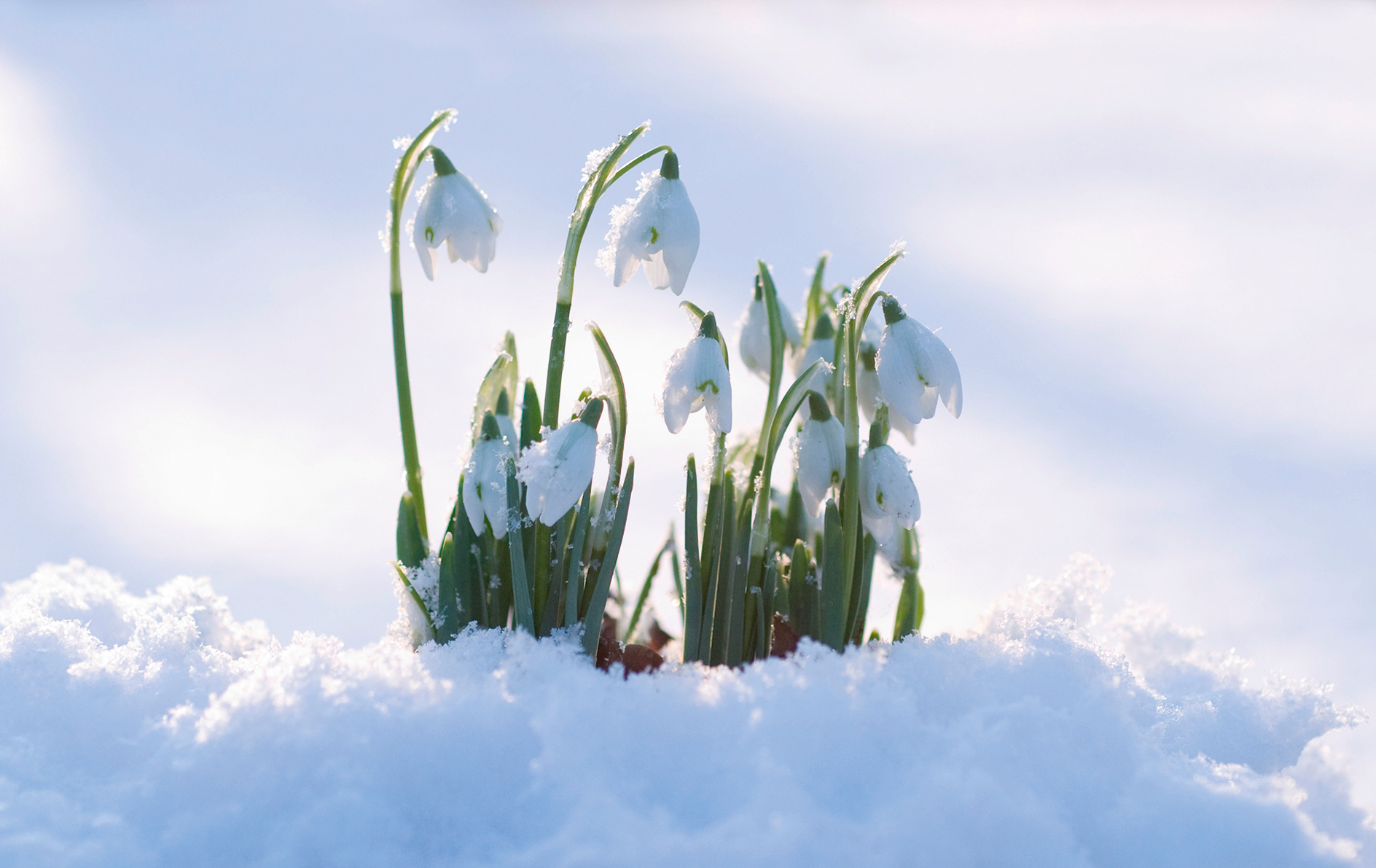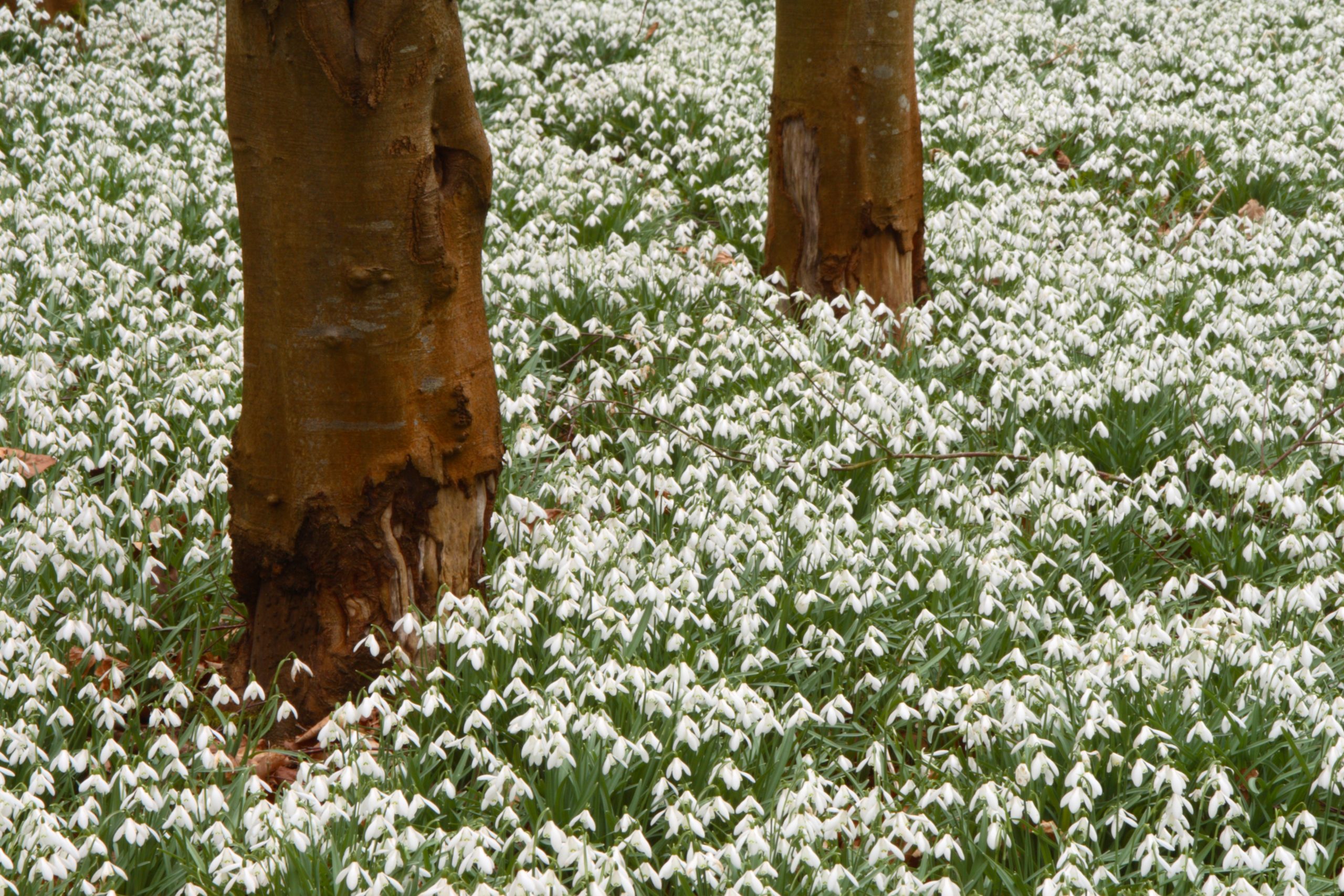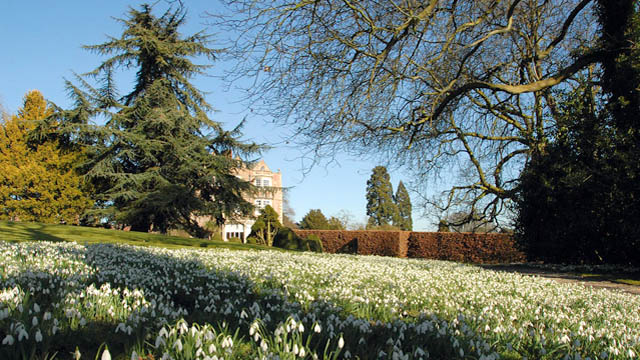Where to see snowdrops: The best places in Britain
The sight of these tiny white flowers peeping through in January or February never fails to cheer us up – here's our pick of where to see snowdrops.


Whatever the hardships of winter, there is cheer to be found in the fact that the snowdrops will always come, first to break through earth crisp with frost, filling us all with inspiration just as we grow fed up with the New Year. ‘Lone flower, hemmed in with snows, and white as they/But hardier far, once more I see thee bend/Thy forehead as if fearful to offend,’ wrote Wordsworth.
Long seen as symbols of hope, rebirth and loyalty, Persephone is said to have brought snowdrops with her every spring when she returned from Hades and their genus name Galanthus derives from Greek words for ‘milk’ and ‘flower’, forever associating them with Mother Nature and other goddesses. What’s not to love?
Hever Castle
At Hever Castle in Kent, 140,000 of these bashful maids now bow their heads, including rare yellow-tipped ‘Wendy’s Gold’, ‘Grumpy’ (looks like a sad face) and a giant (9in) called ‘Colossus’ — from February 7; www.hevercastle.co.uk
Snowdrop Festival at Shepton Mallet
This year’s Snowdrop Festival at Shepton Mallet, Somerset — entirely run by volunteers and funded by grants and open gardens — promises to be the biggest yet, with 500,000 planted on roadsides, roundabouts and public spaces so far. The town was home to ‘Snowdrop King’ James Allen, a self-taught horticulturist who bred more than 100 varieties in the late 19th century; sadly, only two, ‘Magnet’ and ‘Merlin’, survive. The 2024 festival runs from February 12–18 with a programme that includes plant sales, drawing and craft workshops and poetry walks — www.sheptonsnowdrops.org.uk
Colesbourne Park
The home of another galanthophile, Henry John Elwes, is also a site of pilgrimage. Colesbourne Park in Gloucestershire is carpeted in some 350 varieties, including honey-scented Galanthus ‘S. Arnott’, the current crop of which is derived from a clump discovered under a bramble bush in 1985 and was subject to a famous bulb theft in the 1990s. Colesbourne sells many snowdrops, including ‘Epiphany’, which flowers at Christmastime, and G. elwesii ‘Comet’ with a green marking that resembles an upside-down heart. The gardens, which include an impressive arboretum, open for Snowdrop Season on every weekend in February — www.colesbournegardens.org.uk
Thenford
‘Lord and Lady Heseltine have created a garden of major importance at Thenford,’ says Country Life contributor Charles Quest-Ritson. Their planting of a few beneath an ash tree in the 1990s has expanded to some 1000 varieties, tended by Thenford's resident galanthophile, Emma Thick. On a handful of prebooked days in February, visitors to the 70-acre Thenford Arboretum, Oxfordshire, can enjoy walks in snowdrop-heavy woodland — www.thenfordarboretum.com
Exmoor’s Snowdrop Valley
Exmoor’s Snowdrop Valley, on private land owned by the Badgworthy Land Company, takes some beating for its gloriously wild setting deep in Lorna Doone country. Until February 25; visitors start from the village of Wheddon Cross — www.wheddoncross.org.uk
Exquisite houses, the beauty of Nature, and how to get the most from your life, straight to your inbox.
National Garden Scheme
The National Garden Scheme runs a series of snowdrop and spring flower openings at more than 100 gardens, with owners on hand dispensing cake and gardening tips. Welford Park, Berkshire, is one not to miss, where white-blanketed woodland runs down to the River Lambourn. Other highlights include Copton Ash, Spring Platt and Knowle Hill Farm in Kent; Higher Cherubeer, Devon; Pembury House, East Sussex; and Hollyhocks in Oxfordshire. All are owned by snowdrop specialists. There are around 100 participating gardens in Snowdrop season — visit www.ngs.org.uk for gardens near you.
Hill Close Gardens
Hill Close Gardens in Warwick has more than 130 varieties of snowdrops, including an entire border planted with older varieties dating from pre-1900 hillclosegardens.com
Waddesdon Manor
Waddesdon Manor, Buckinghamshire, promises an enchanting display with its 120,000 Galanthus bulbs.
Easton
In Lincolnshire, the exquisitely restored Easton Walled Garden is covered in snowdrops until early March, with a delightful woodland walk. The Gardens open for Snowdrops on Wednesdays to Sundays, 11am-4pm.
Chelsea Physic Garden
In London, meanwhile, the Chelsea Physic Garden has a Heralding Spring trail.
Wheddon Cross
The famous Snowdrop Valley at Wheddon Cross on Exmoor is open between Saturday 27th January and Sunday 25th February 2024, with parking and refreshments in the market car park.

Snowdrop buyers should also head to Kent for the Plant Fairs Roadshow at Hole Park and the Snowdrop Sensation Plant Fair at Great Comp Garden on Sunday February 19th. To learn more, George G. Brownlee’s new book, A Passion for Snowdrops, is an engaging guide (£15.99, Whittles Publishing).
Borders - Abbotsford
Impressive displays are already showing on the banks of the River Tweed at Abbotsford – snowdrops grow throughout the 120-acre estate, which is freely accessible all year round.
Cambridgeshire – Chippenham Park
Created at the end of the 17th century as an ‘Angle Dutch’ landscape comprising canals, park, woodland and formal gardens.
www.chippenhamparkgardens.info
Cheshire – Rode Hall
There have been snowdrops in the Repton landscape at Rode Hall for nearly 200 years and they are considered one of the natural treasures of the North West. There are snowdrop walks and a farmer’s market on some days.
Cumbria – Forde Abbey
Founded by Cistercian monks 900 years ago, with a garden developed in the 1700s – open every day with snowdrop weekends throughout February.
Dorset – Shaftesbury Snowdrop Festival
The whole town goes Snowdrop mad throughout February.
Fife – Cambo
The Cambo estate has 70 beautiful acres of woodland banks that are jam-packed with rare varieties — there are tours every weekday, specialist talks with experts and children's activities.
Kent – Goodnestone Park
Home of Jane Austen’s brother, open 11-4 every day.
www.goodnestoneparkgardens.co.uk
Norfolk – Walsingham Abbey
The spectacular priory drew pilgrims for centuries and now the snowdrops bring in the crowds, too.

Northumberland – Howick Hall
The collection here was mostly planted between the World Wars by Lady Grey. Open to visitors in February and March.
Peebleshire – Kailzie
Also has a two-mile stretch of the River Tweed for fly-fishing. February and March.
Surrey - Gatton Park
These marvellous gardens were designed by Capability Brown.
Warwickshire — Hill Close Gardens
Hill Close Gardens in Warwick has more than 130 varieties of snowdrops, including an entire border planted with older varieties dating from pre-1900.
West Sussex – West Dean Gardens
More than 500,000 spring bulbs have been planted, not just snowdrops – open every day from the start of February.
Yorkshire – Goldsborough Hall
A former royal residence, Goldsborough Hall, built in 1620 and remodelled in the 1750s, is opening its snowdrop walk on selected February days, with more than 50 rare varieties.
Country Life is unlike any other magazine: the only glossy weekly on the newsstand and the only magazine that has been guest-edited by His Majesty The King not once, but twice. It is a celebration of modern rural life and all its diverse joys and pleasures — that was first published in Queen Victoria's Diamond Jubilee year. Our eclectic mixture of witty and informative content — from the most up-to-date property news and commentary and a coveted glimpse inside some of the UK's best houses and gardens, to gardening, the arts and interior design, written by experts in their field — still cannot be found in print or online, anywhere else.
